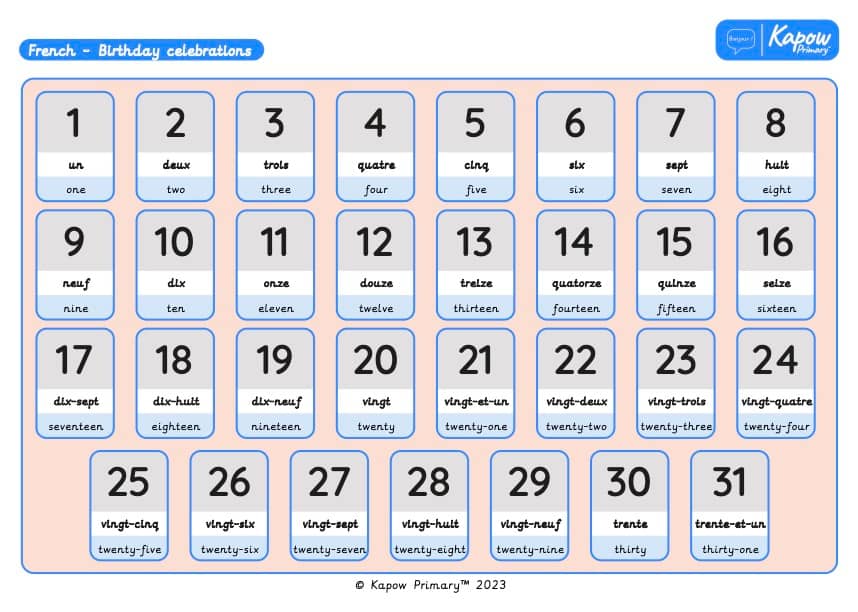
A Knowledge organiser that captures the essential knowledge and skills learnt throughout the unit French, Mixed-age Year 3/4 Cycle B, Birthday Celebrations.
This French resource is designed to support the pupils as they learn vocabulary and phrases related to birthdays and celebrations. It introduces key vocabulary such as months, numbers, party items, gifts, and greetings, helping the pupils develop their French-speaking, listening, and reading skills. The pupils will also learn how to say when their birthday is, describe birthday traditions, and engage in simple conversations about celebrations.

A Knowledge organiser that captures the essential knowledge and skills learnt throughout the unit French, Mixed Age Year 3/4 Cycle B, Fabulous French Food.
This French resource is designed to support the pupils as they learn vocabulary and phrases related to food and meals. It introduces key vocabulary such as fruits, vegetables, meals of the day, and common food-related expressions, helping the pupils develop their French-speaking, listening, and reading skills. The pupils will also learn how to order food, express preferences, and engage in simple conversations about meals and dining.

A Knowledge organiser that captures the essential knowledge and skills learnt throughout the unit French, Mixed-age Year 3/4 Cycle B, Birthday Celebrations.
This French resource is designed to support the pupils as they learn vocabulary and phrases related to birthdays and celebrations. It introduces key vocabulary such as months, numbers, party items, gifts, and greetings, helping the pupils develop their French-speaking, listening, and reading skills. The pupils will also learn how to say when their birthday is, describe birthday traditions, and engage in simple conversations about celebrations.
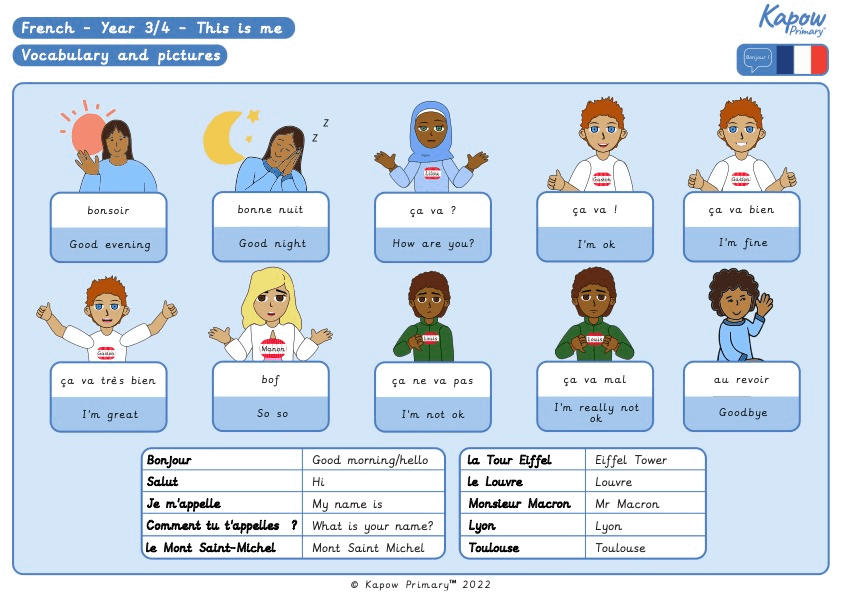
A Knowledge organiser that captures the essential knowledge and skills learnt throughout the unit French, Year 3/4 Cycle B, This Is Me.
This French resource is designed to support the pupils as they learn vocabulary and phrases related to personal identity and self-description. It introduces key vocabulary such as name, age, nationality, family, and hobbies, helping the pupils develop their French-speaking, listening, and reading skills. The pupils will also learn how to introduce themselves, describe their interests, and engage in simple conversations about personal information.
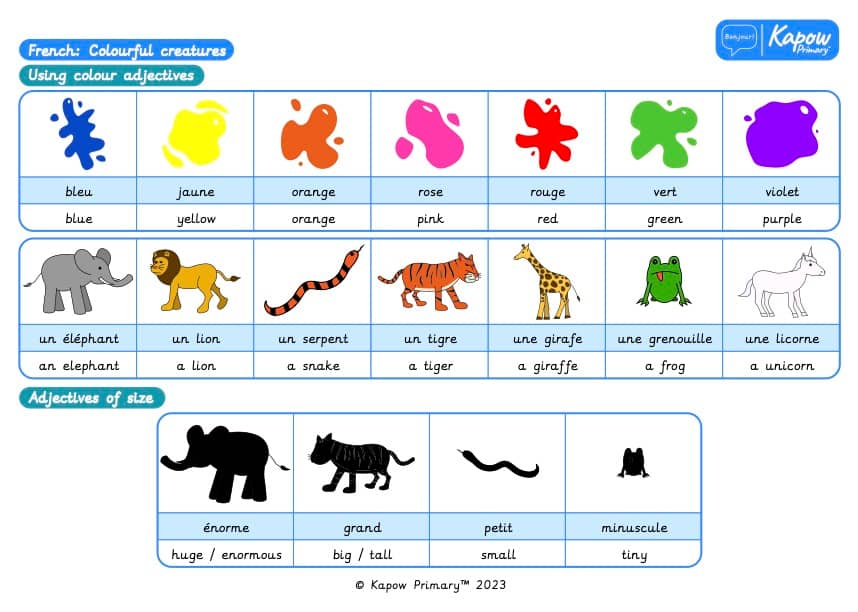
A Knowledge organiser that captures the essential knowledge and skills learnt throughout the unit French, Mixed-age year 3/4 (B), Colourful Creatures.
This French resource is designed to support the pupils as they learn vocabulary and phrases related to animals and colours. It introduces key vocabulary such as animal names, colours, adjectives, and descriptive phrases, helping the pupils develop their French-speaking, listening, and reading skills. The pupils will also learn how to describe animals using colours and simple sentence structures.
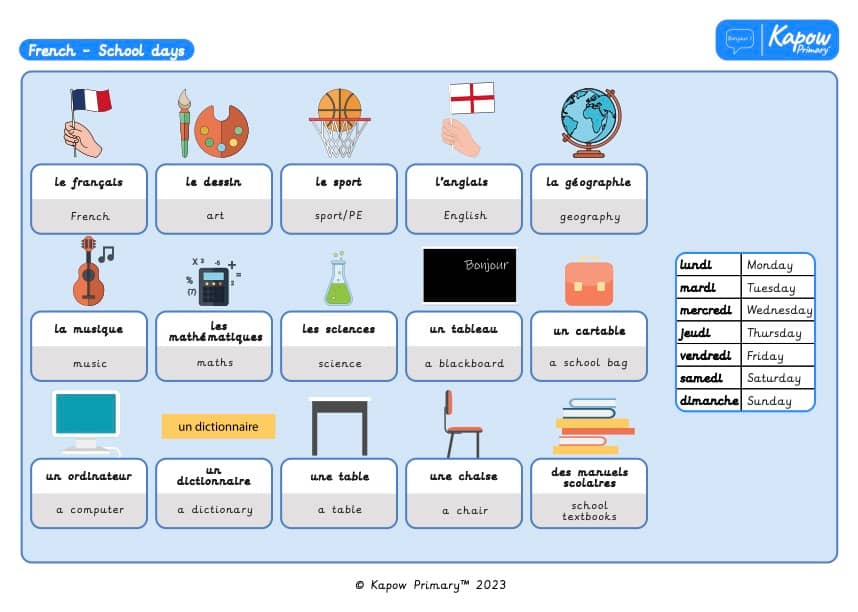
A Knowledge Organiser that captures the essential knowledge and skills learnt throughout the mixed-age unit French, Year 3/4 (B), Unit 2: School days.
This resource is designed to support pupils as they develop vocabulary and conversational skills related to school subjects, classroom objects, and days of the week in French. Pupils learn key nouns such as le sport (PE), la musique (music), un cartable (school bag), and un ordinateur (computer), supported by colourful visual aids. The organiser also introduces sentence structures used to describe classroom environments and routines (e.g. Dans ma salle de classe, il y a une chaise et une table – “In my classroom, there is a chair and a table”), as well as how to express what subjects are studied on which days. A helpful grammar guide explains how to use definite (le, la, l’, les) and indefinite (un, une, des) articles based on noun gender and number. This resource is ideal for building pupils’ confidence in using simple French to describe their everyday school life.
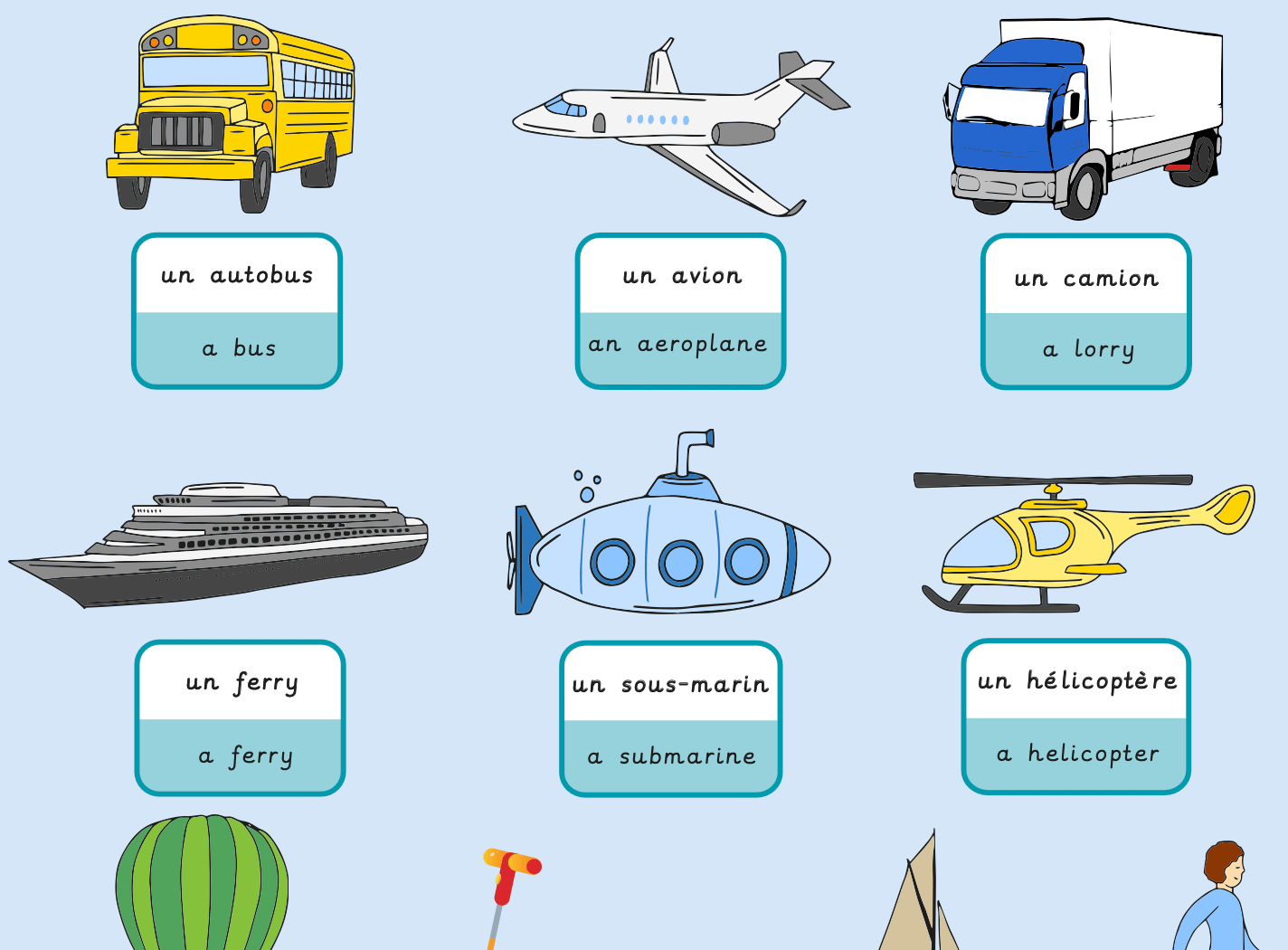
A Knowledge organiser that captures the essential knowledge and skills learnt throughout the unit French, Year 5/6 Cycle B, Transport.
This French resource is designed to support the pupils as they explore different modes of transport and their impact on people and the environment. It introduces key vocabulary such as infrastructure, emissions, public transport, sustainability, and congestion, helping the pupils understand how transport systems function in urban and rural areas. The pupils will also learn about historical developments in transportation and consider the benefits and challenges of different transport options.
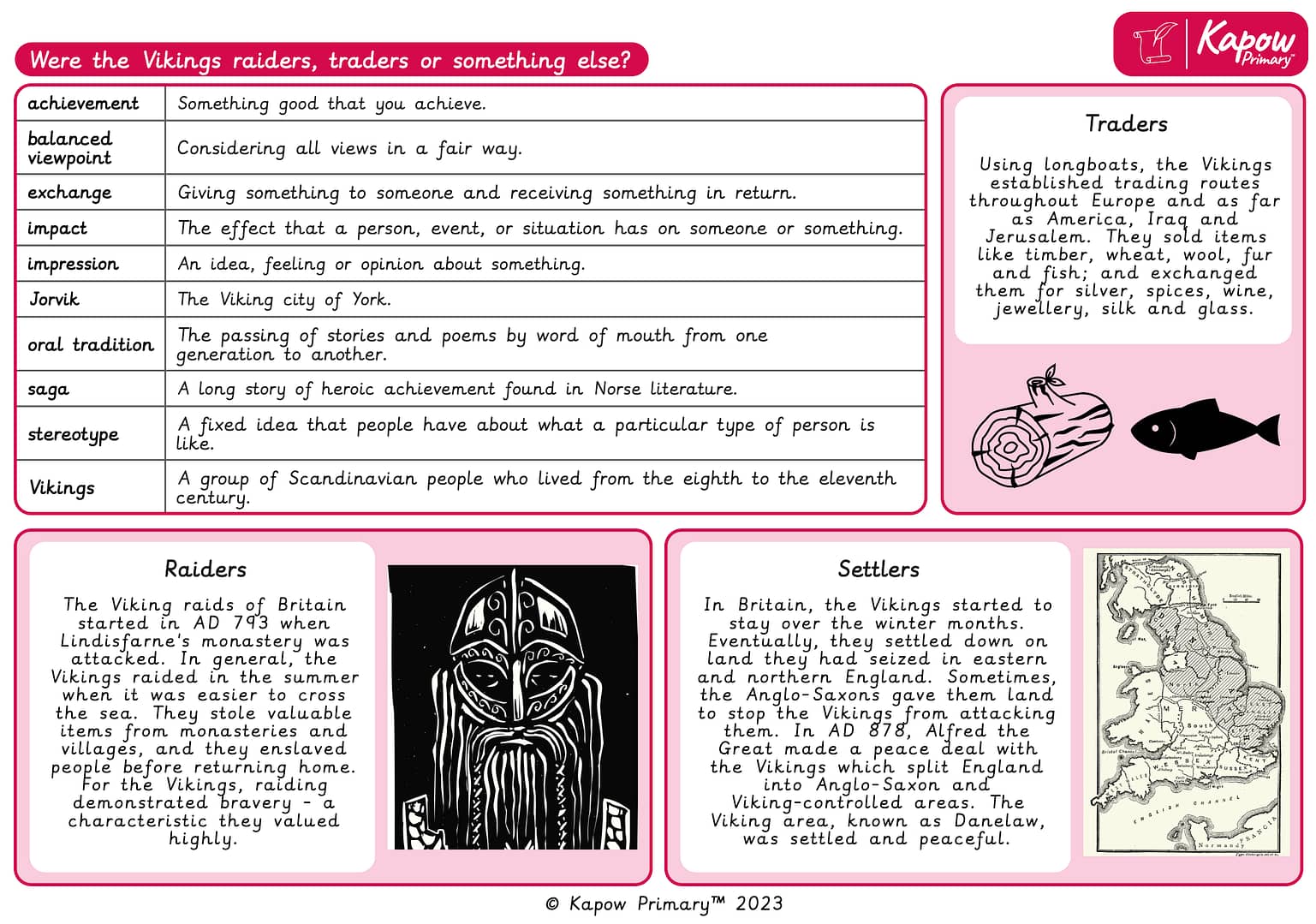
A Knowledge organiser that captures the essential knowledge and skills learnt throughout the mixed age unit History, Y5/6 (A): British history 4: Were the Vikings raiders, traders or something else?
This resource is designed to help pupils explore the complex roles the Vikings played as raiders, traders, and settlers. It introduces key terms such as saga, oral tradition, stereotype, and balanced viewpoint, encouraging pupils to consider a range of perspectives.
Through illustrated sections, the unit examines Viking raids—beginning with Lindisfarne in AD 793—alongside their far-reaching trade networks and eventual settlement in regions like Danelaw.
A detailed timeline spanning AD 793 to AD 1042 supports a chronological understanding of Viking influence in Britain, including major events such as the Battle of Edington and the rule of King Cnut. This resource supports historical enquiry by helping pupils build vocabulary and analyse evidence from multiple viewpoints.
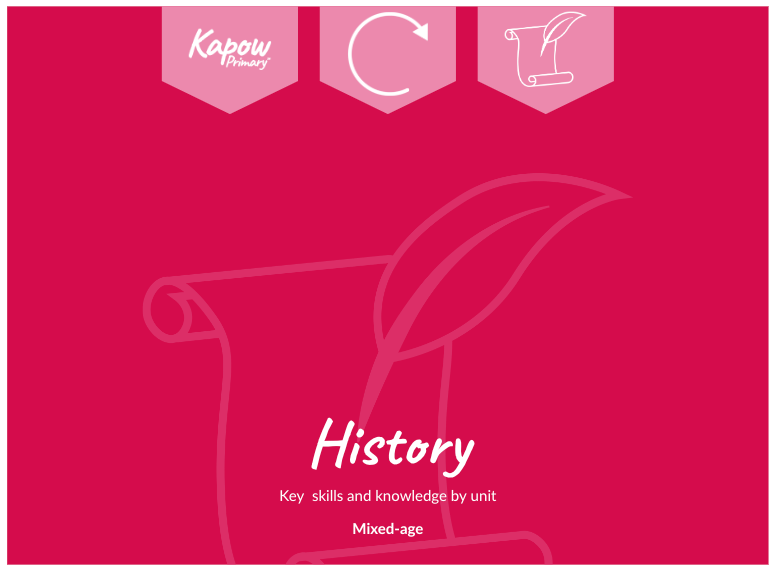
This document shows which mixed-age units help pupils meet the knowledge and skills outlined in our History curriculum. It is useful for planning and ensuring that pupils in mixed-age classes achieve the same learning outcomes as single-age classes.
For detailed information on our History curriculum for primary schools, please visit our Kapow Primary History page.
- Reception (EYFS): Ideal for early years, our EYFS scheme of work for History helps build foundational knowledge and curiosity about history.
- Key Stage 1: Suitable for Years 1 and 2, the KS1 History scheme offers engaging lessons introducing basic historical concepts and events.
- Lower Key Stage 2 (Years 3 and 4): Our lower KS2 history scheme of work is designed to deepen pupils’ understanding of historical events and their impact.
- Upper Key Stage 2 (Years 5 and 6): The upper KS2 history scheme of work provides comprehensive lessons that prepare pupils for more advanced historical studies in later years.








